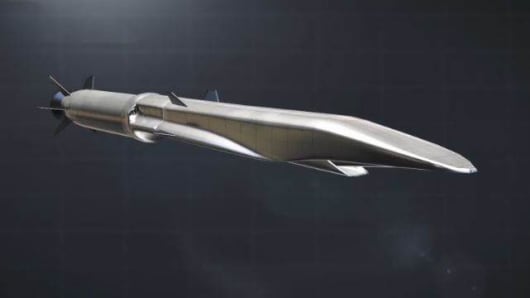The Air Force plans to fire off new prototype ICBMs in the early 2020s

The Air Force is building a new generation of nuclear armed Intercontinental Ballistic Missiles (ICBMs) using cutting edge "digital engineering" methods intended to fast-track development of the new weapons system and fire off initial prototypes as soon as next year.
Digital engineering, using advanced computer programming, design work and engineering software enables Air Force developers to analyze a wide range of realistic weapons designs without having to build them all. Naturally, this streamlines weapons development and potentially circumvents some lengthy or more cumbersome elements of the traditional acquisition process - to bring powerful new high tech weapons to the force on a faster timeframe.
“With digital engineering we can look at 10 to 20 designs,” William Roper, Assistant Secretary of the Air Force, Acquisition, Technology & Logistics, told an audience recently at an Air Force Association Symposium.
The Air Force plans to fire off new prototype ICBMs in the early 2020s, assessing new ICBMs with improved range, durability, targeting technology and overall lethality when compared to the existing arsenal, service officials said. The new arsenal of ICBMs to serve well into the 2070s – called Ground Based Strategic Deterrent, or GBSD.
Given the aging arsenal of Minuteman III ICBMs, this program is taking center stage for the Air Force. The service has awarded two developmental deals to Northrop Grumman and Boeing and plans fire off early prototypes as soon as next year.
Northrop Grumman and Boeing teams were awarded Technology Maturation and Risk Reduction deals from the Air Force last year as part of a longer-term developmental trajectory aimed at developing, testing, firing and ultimately deploying new ICBMs.
Following an initial 3-year developmental phase, the Air Force plans an Engineering and Manufacturing Development phase and eventual deployment of the new weapons.
The Air Force plans to award the single EMD contract in late fiscal year 2020.
Overall, the Air Force plans to build as many as 400 new GBSD weapons to modernize the arsenal and replace the 1970s-era Boeing-built Minuteman IIIs.
The new weapons will be engineered with improved guidance technology, boosters, flight systems and command and control systems, compared to the existing Minuteman III missiles. The weapon will also have upgraded circuitry and be built with a mind to long-term maintenance and sustainability, developers said.
Initial subsystem prototypes are included within the scope of the current Boeing and Northrop deals, service developers said. Senior nuclear weapons developers have told Warrior that upgraded guidance packages, durability and new targeting technology are all among areas of current developmental emphasis for the GBSD.
The new ICBMs will be deployed roughly within the same geographical expanse in which the current weapons are stationed. In total, dispersed areas across three different sites span 33,600 miles, including missiles in Cheyenne, Wyoming, Minot, North Dakota and Great Falls, Montana.
The Paradox of Strategic Deterrence
“GBSD will provide a safe, secure and effective land-based deterrent through 2075,” Cronin claimed.
If one were to passively reflect upon the seemingly limitless explosive power to instantly destroy, vaporize or incinerate cities, countries and massive swaths of territory or people -- images of quiet, flowing green meadows, peaceful celebratory gatherings or melodious sounds of chirping birds might not immediately come to mind.
After all, lethal destructive weaponry does not, by any means, appear to be synonymous with peace, tranquility and collective happiness. However, it is precisely the prospect of massive violence which engenders the possibility of peace. Nuclear weapons therefore, in some unambiguous sense, can be interpreted as being the antithesis of themselves; simply put – potential for mass violence creates peace – thus the conceptual thrust of nuclear deterrence.